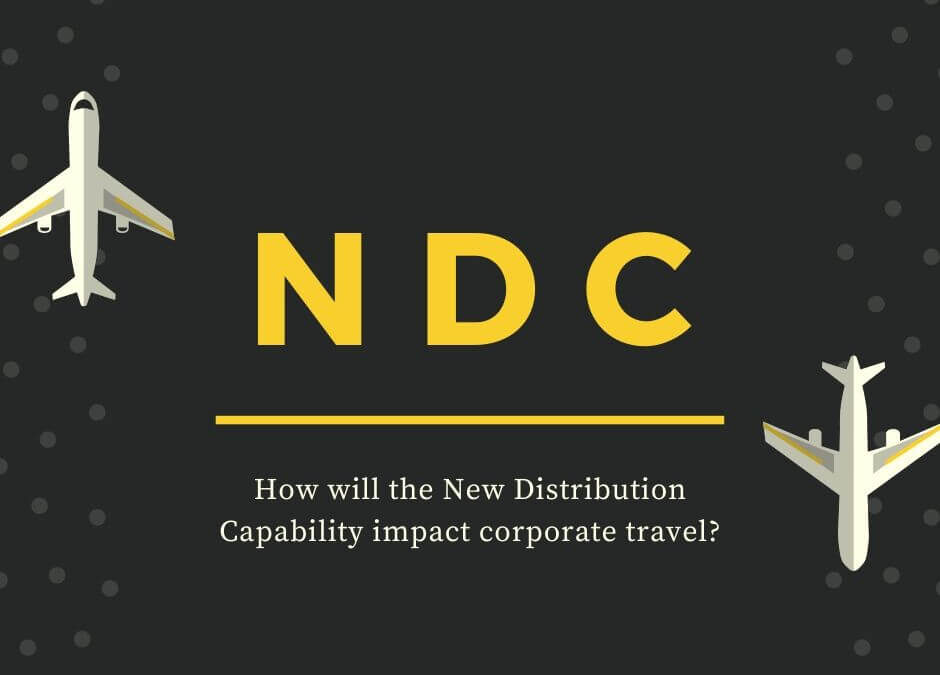
by Dave Stevenson | Jun 16, 2020 | Trondent Blog
As your employees go back to the office and resume corporate travel, it is critical for organizations to prioritize their business travelers’ safety. They must find new ways to mitigate risk and control travel spend in the post-Coronavirus era.
It is also important that organizations effectively communicate changing travel policy to those affected in a quick and efficient way. Once your company defines what “permissible travel” looks like, an automated pre-trip authorization platform can help you manage essential business travel.
Business Trip Reason
 One of the most important factors in determining whether a business trip should be approved or declined its purpose. Trondent’s pre-trip authorization platform, Authorizer AI, has the capability to create different trip workflows based on a variety of trip purposes. Trondent cross references the trip’s reason and all other PNR details against your company’s travel policy and permissible purposes. If it meets your company’s requirements, the trip is automatically approved without any manual oversight or time spent.
One of the most important factors in determining whether a business trip should be approved or declined its purpose. Trondent’s pre-trip authorization platform, Authorizer AI, has the capability to create different trip workflows based on a variety of trip purposes. Trondent cross references the trip’s reason and all other PNR details against your company’s travel policy and permissible purposes. If it meets your company’s requirements, the trip is automatically approved without any manual oversight or time spent.
If the purpose for the trip isn’t quite essential, the approving manager would receive an email that contains the trip details, including its reason and any other out-of-policy selections. By giving the approver all of this information, they are able to make a quick, well-informed decision on whether the business reservation should get ticketed. The Approve or Decline button is conveniently embedded directly in the approver’s email message so they can make their decision right from their email without logging in to any system or platform.
Risk Management Data
This is crucial. Trondent can integrate with your Risk Management provider (or work with one of our risk management partners) to include risk management data like country, security and health ratings, COVID-19 data or open border information into your pre-trip approval process. This way, your travelers and managing approvers stay on top of the latest developments occuring at their destination and layover countries. Potential issues are identified before the trip is ticketed.
Traveler Consent/Attestation Form
Corporations concerned about travelers’ risk and well-being may wish to obtain written traveler consent as part of the trip approval process. This would serve as confirmation that the traveler is comfortable traveling,  and well enough to do so, while also helping mitigate overall corporate risk.
and well enough to do so, while also helping mitigate overall corporate risk.
The itinerary would be sent to the traveler for consent before it gets forwarded to the appropriate approvers. Links to your current travel policy and requirements are embedded into the email to assure that the traveler can familiarize themselves and comply with it.
 Calculated Travel Risk Score
Calculated Travel Risk Score
Our Artificial Intelligence-driven engine calculates a “risk score” for each trip request based on your company-defined criteria and risk factors. It can be utilized in both automated and manual trip approval processes. This score indicates a veritable “pain-threshold” of potential risk associated with a business trip based on where it’s going and any threat variables associated with it.
Minimize Financial Risk
While expense platforms report unnecessary and excessive spend data after the fact, Authorizer AI helps you identify such spend before it occurs. This way, you can catch excessive spending before the trip is ticketed and recoup loss that would otherwise be incurred by company. These trip requests are forwarded for manual review by the appropriate, managing approver.
Given all of these reasons, we encourage you to let Trondent help strengthen your travel program with our advanced pre-trip authorization solution. Contact Trondent today to learn more.

by Dave Stevenson | Mar 25, 2020 | Trondent Blog
Shortly before the new year, the business forecast was less than sunny yet not in danger of full-fledged recession. The political scene was chaotic. Economic factors spiraled out of control with a trade war between the United States and China and the fate of Brexit still up in the air. Add that to the shifting dynamic of the workforce thanks to millennial employees, and talk of a recession was growing.
Enter 2020. No one could’ve seen it coming (save for the scientists who’ve been warning us for decades). The Coronavirus – COVID 19, has affected all levels of business, not just its travelers. The hospitality industry has been profoundly wounded by the loss of business the past couple months, and the end is not yet in sight. Now is the critical time for companies to prepare for a looming travel recession.
It requires a multifaceted approach. While various measures to save money can be implemented, one of the first places to look is the travel budget. If you are looking to prepare your travel department for hard times ahead or simply want to increase savings for your corporation, then here are some cost-saving measures for your business travel program.
Clarify Your Corporate Travel Policy
One reason that travel expenses balloon out of control for most businesses can be traced to a lack of clarity around travel policy. Basically, most companies fail to develop a clear policy for travelers to refer to when arranging travel plans.
A concise travel policy should include detailed information on booking flights, meal allowances, hotel and ground transportation costs and any extraneous expenditures, as well as instructions on how to handle extraordinary circumstances like the recent viral outbreak. The policy should explain procedures for getting costs approved while outlining how expenses are processed.
The more specific you are, the less room for error. Create a policy that standardizes the approval process while setting clear guidelines. This helps keep employees on budget, and it also prevents employees from booking expensive trips without approval.
Pre-Trip Approval
For greater cost savings, invest in an automated pre-trip approval software like Authorizer PRO which optimizes the trip approval process and serves as a tool to control various travel costs. An advanced pre-trip approval software helps facilitate company policy compliance and high level of efficiency in the approval process.
The system monitors policy rules such as advance purchase, air, hotel and car rates, preferred vendor and seat selection, etc. and allows for the application of various policy rules based on traveler type, flight length, cost center, etc. The use of these advanced rule types, as well as the ability to minimize the need for manual approval, provide companies with ability to implement the most effective policy and process and secure significant savings in result.
Recovering Unused Airline Tickets
It is unfortunate, but true, that business travelers often change itineraries after booking. This can cost companies up to 20% of total travel spend. Non-refundable tickets tend to be cheaper upfront than flexible tickets which can cost nearly four times as much. Unused airline tickets usually cannot be donated or transferred, and expire within a year.
That is why monitoring unused tickets and utilizing it as soon as possible is an essential tool in controlling travel costs. Utilizing an e-ticket recovery platform like eTRAK PRO helps corporations recover most of the ticket value which would otherwise be lost.
Pre-trip notifications remind the traveler of the upcoming trip so they have a chance to make any necessary changes early. Identified unused tickets are posted to the traveler’s profile making it easy to identify who has unused ticket segments left in order to redeem or exchange them upon said traveler’s next business trip. Unlike GDS’s, eTRAK monitors unused tickets for a full year and alerts of tickets expiring in the near future. So if you don’t currently have a tool to keep track of unused tickets, we highly suggest you implement one.
Be Smart About Airfare
Set guidelines that require travelers to fly Economy, especially on short flights. You can set seat type restrictions based on trip length and traveler type. Restrict access to flexible tickets and encourage employees to book tickets on less expensive days whenever possible.
In business, last-minute travel is often unavoidable. As soon as you know about a trip, start booking it. Costs like airfare, hotel fees and more are all much lower when you book in advance. In fact, the prices can skyrocket at the last minute, exponentially impacting your travel budget.
Advance purchase options are ideal because they allow travelers to book and pay at a discounted rate so long as the ticket is issued a certain number of days before departure or within a fixed time from the date of booking. This can be determined in your contract negotiation with preferred carriers.
Save Money on Hotels
In the face of a recession, travel managers can re-evaluate existing vendor contracts as well as established contracts with new, preferred vendors to secure rates that will help the corporation maintain budgeted spending.
By promoting the use of those preferred vendor programs through your travel policy and pre-trip approval process, employees know what hotel chains they should book to redeem special corporate rates. Be sure to set a rate cap for most employees but allow for exceptions in certain situations.
Control Extraneous Charges
Just when you think you have corporate travel expenses under control, the auxiliary charges start rolling in. Therefore, be realistic about the needs of your employees on the road. Set a daily meal allowance instead of a per-meal allowance, giving travelers the flexibility to pick and choose how much they spend on each meal.
For transportation, encourage employees to use cost-effective methods like shuttle bus services or shared ride services like Uber. Again, you can create vendor relationships with Uber and Lyft for special rates.
Your travel department must also prepare for indirect expenses related to traveling like Internet access, parking fees or tips for service personnel. Setting a budget in advance can ease the potential for unexpected hikes in spending.
Don’t Be Afraid of Travel During a Recession
Recessions can be challenging, but it is important for your business to keep moving. With these tips, you can actively maintain your business travel within a set budget in order to stay on top of the competition. Implementing certain software solutions can have a great impact on improving efficiencies and provide significant savings. The future may be uncertain, but your travel expenses do not have to be.

by Dave Stevenson | Mar 2, 2020 | Trondent Blog
How Your Company Can Reduce its Carbon Footprint
Buzz words like “sustainability”, “corporate responsibility” and “ecotourism” have been around for some time now, particularly since the 2015 United Nations Climate Change Conference, which effectively committed almost every country on Earth to reduce its emissions.
As more and more people recognize the critical need to protect Earth’s resources and reduce our carbon footprint, combining sustainability and travel — eco-travel — is becoming a priority for corporations, realizing that corporate travel in particular has a significant impact on the environment. Organizations ranging in size from startups to large, publicly-held corporations have taken note of the fact that even minor improvements can drastically reduce their carbon footprint — and improve their bottom line.
Here’s a closer look at what exactly “green” business travel means, why companies should care, and how it can be implemented.
Sustainability 101
While the definitive parameters are frequently debated, sustainability can best be defined as fulfilling the needs of the present generation while not compromising future generations’ ability to meet their needs. In other words, maintaining well-being for extended periods of time relies heavily on the well-being of our natural environment and its natural resources.
The three pillars of sustainability include:
- Economic – Profit
- Social – People
- Environmental – Planet
How Sustainability Relates to Business Travel
There are obvious benefits to creating a more environmentally-friendly corporate travel program, such as cutting down waste and reducing greenhouse gas emissions. Companies are learning that green business travel is often synonymous with cost-effective business travel.
Consider this: USA Today looked at six of the most popular business flight routes in the country (Boston to New York, New York to Washington, D.C., Miami to Tampa, Chicago to St. Louis, San Antonio to Dallas, and San Diego to Los Angeles) and compared the cost of flying versus traveling by train, using popular search tools like Kayak. In all six routes, Amtrak rail travel was significantly less expensive than even the cheapest flight alternative. The train fares ranged from $115 to $435 less than airfare, and that doesn’t take into account baggage fees on planes. Similarly, numerous reports like this one show that using rideshares versus renting a car are typically more economical — often by a considerable amount. When you factor in fuel costs, parking or valet fees, and insurance for rental cars, this makes perfect sense.
The numbers are there, but how can organizations put this to work?
Businesses can Boost Sustainable Travel Efforts
The truth is that the best and most effective way to reduce travel-related emissions is to simply avoid traveling. For many industries, however, business travel is simply not negotiable.
This is particularly true in client-facing industries where relationship-building is critical. However, the means of travel and its frequency can be considered and improved in almost every instance to be more sustainable.
While it may seem daunting to make your organization’s corporate travel more sustainable, the good news is that little changes add up to big results. With Authorizer AI, for example, Trondent’s newest pre-trip authorization platform, we are championing a means of helping businesses replace travel with eco-travel. Our pre-trip authorization platform uses Artificial Intelligence to help employees select better eco-travel choices by calculating a trip’s carbon emissions and offering recommendations or alternatives.
Here are more tips on how your business can implement sustainable corporate travel.
- Put technology to work. With so many digital tools for working remotely available today, companies should encourage more frequent and efficient use. Invest in modern software and other tools that enable your organization to conduct virtual meetings, employees and teams to work together no matter where on Earth they’re located, and managers to check in with clients between more important face-to-face meetings.
- Explore alternatives to flying. According to the International Air Transport Association (IATA), airplanes alone account for 2.5% of the world’s total greenhouse emissions. By contrast, traveling by train releases approximately seven times less the emissions than a plane on the same route. Though this may not be a feasible solution for cross-country trips, it makes perfect sense for regional trips. Plus, rail travel is considerably less expensive than airfare.
- Consider approving more direct flights. For trips that absolutely have to be taken by plane, think direct. There’s no question that flights with layovers are typically more economical, but at a much greater cost to the environment. Emissions are released primarily during takeoff and landing, so avoiding layovers is a far greener choice. Many major airlines have also started publishing their flights’ carbon dioxide emissions to help you make an informed decision.
- Pick environmentally-conscious hotel partners. All Fairmont hotels are LEED-certified, and many have upgraded their roofs to be green. Hilton hotels have dramatically decreased their waste production and water waste in the past several years, while many Marriotts grow their restaurants’ produce onsite. Consider booking exclusively with one of these hotel groups for corporate travel.
- Go green on the ground. Consider offering incentives for employees who opt to take public transportation or rideshares at their destination as opposed to getting a rental car. If a rental car is a must, consider altering your travel policy to allow only for economy, compact, hybrid, or electric vehicles.
With these tips in mind, and the software tools available to assist corporations in making eco-friendly travel decisions, sustainability is within reach. Contact Trondent today to learn more about how Authorizer AI can contribute to your corporate sustainability efforts!

by Dave Stevenson | Jan 20, 2020 | Trondent Blog
Today’s emerging new breed of corporate travelers require something different from the cookie-cutter policies provided to their counterparts of the past. Customizable itineraries, increased choices, and travel policies reflective of individual company culture are just some of the business travel trends coming together to form the kind of people-first dynamic that a growing number of corporations are adopting for their corporate travel program in the coming year.
Allowing for Alternative Lodging and Transportation Options
Corporate travelers of the past were usually put up in generic hotels and provided an expense account that covered taxi services to and from business meetings and other necessary activities. Today’s corporate travel options are far more likely to include lodging alternatives such as Airbnb and are also expanding their transportation options to include Lyft and Uber. As a greater number of Millennials enter the corporate arena, personalized customization options will undoubtedly continue to increase.
Blending Business with Leisure
Another Millennial-driven corporate travel trend is the marriage of business and leisure travel to create a hybrid known affectionately, if unofficially, as bleisure. As its name implies, bleisure combines local experiences with taking care of business. For instance, someone traveling on business to Colorado during the winter may choose to extend their stay through the weekend in order to take advantage of the opportunity to enjoy some of the best downhill skiing in the U.S. Travelers visiting a region renowned for its culinary and wine scene may choose to hold business lunches and dinners in establishments featuring locally sourced fare rather than in generic hotel restaurants. As one of the results of this emerging trend, more travel managers and booking software are allowing for simultaneous booking of leisure and corporate travel.
Traveler Well-Being
Business travel also has the potential to create stress as well as put a strain on personal lives. Customization options help take the edge off by allowing travelers more control over the situation and the process. Improved traveler satisfaction means streamlined booking processes are replacing their more cumbersome counterparts, technology is making it easier than ever to handle bumps in the road such as last-minute schedule changes and airline delays.
Travel software that prioritizes user preference is becoming increasingly popular as well. ProFILER Express provides a travel management environment in which users enjoy a streamlined experience that integrates user profiles across a variety of systems. This eliminates the time-consuming necessity of creating and using individual profiles for every booking system.
Artificial Intelligence
Not exactly in its infancy yet nowhere near being a fully-fledged adult, AI technology might be best described as a very intelligent 8-year old child. It’s popping up everywhere, and the business travel sector is no exception. Expect to see more of amenities such as robot-manned self-service hotel check-ins, luggage delivery, and some room services.
The general consensus among hotel industry professionals, however, is that because hotels are a people-oriented business, artificial intelligence will never completely replace the human touch. Nonetheless, younger travelers who literally grew up with technology as a form of a second language will appreciate the convenience of having 24-hour AI technology at their disposal. As this trend continues to mature, corporate travel managers will develop a stronger sense of when it’s appropriate and even desirable to replace human interaction with automation and when the situation and circumstances call for the human touch.
Authorizer PRO pre-trip authorization software has recently been upgraded to include intuitive AI capabilities, providing an even better user experience. Instead of simply handing out black-and-white trip outcomes, the new system takes gray areas into consideration. For instance, if a specific hotel room is a dollar or two over the approved price point, it won’t be automatically declined the way it would be if the price were several hundred dollars over the line. The new Authorizer AI delivers smarter results and saves businesses time and money on travel management tasks.
A Resurgence of Face-to-Face Business Meetings
Video conferencing was a huge corporate trend that’s still widely represented on today’s corporate landscape, but a growing number of companies have discovered that building business relationships depend highly on face-to-face interactions. This means that business travel will likely increase as more corporations jump on board. Even though technology has almost perfected video conferencing to the extent that it provides an acceptable virtual experience, closing deals and other essential transactions require a personal element that faces on a screen simply can’t provide.
Motivational Traveling
Closely related to employee well-being, motivational travel is meant to provide inspiration and promote creativity. This type of travel combines old-school corporate retreat principles with 21st century values and technology. Traditional corporate retreats were more about team-building and employee bonding than experiencing a new place.
Motivational travel is centered around the travel experience itself as a way to expand individual perspectives and stimulate the senses. Departing from an everyday norm by experiencing a new destination provides an excellent way to shake up intellectual and emotional ruts, and corporations are discovering that this approach results in increased performance and productivity among employees of all levels.
Expect More Personalization Overall
It’s likely that these trends will continue to evolve along with the rapidly changing corporate culture of the 21st century and the Millennial generation takes its place on the global business stage. The continued evolution of New Distribution Capability will allow airliners to provide customers more relevant choices and ancillary service offers. Overall, the future of business travel will likely involve further customization, bleisure travel, and an increased level of regard for overall employee well-being.

by Dave Stevenson | Nov 6, 2019 | Trondent Blog
New Distribution Capability is a hot topic right now! We’ve heard our customers voice concern over what it means for them. We thought we’d tackle the issue head-on and diffuse some of the confusion around it.
What is NDC?
Introduced by the International Air Transport Association (IATA) in 2012, the New Distribution Capability (NDC) Standard allows airlines to provide customers more relevant choices, greater personalization as well as unique, ancillary product and service offers. It’s not a program or platform. It is a standard that revolutionizes the way airlines previously sold their services. By moving away from legacy systems to a more digital merchandising model similar to other online retailers, airline companies hope that it can better meet the needs of its customers.
You’ve Seen NDC Before
NDC is a lot like what you’ve already seen from online retailers; a great example is Amazon. In order to shop on Amazon, you are first required to set up an account. This allows the retailer to track and evaluate every purchase you make. It uses a type of filtering algorithm to identify your purchases, and then rate those purchases to similar items available through their online marketplace. Thus Amazon is able to deliver a list of product recommendations tailored to your unique shopping history. Simply put, because you previously purchased X, you might like Y.
This is exactly what the airlines are attempting to replicate. Legacy systems lacked the ability to follow or understand their travelers’ behavior nor were they able to show them unique content offers. Now through NCD, airlines are able to create targeted content (more flight amenities) and dynamic pricing (fare options) most relevant for its audience.
When travelers book their trip, the online booking tool or travel agency provides the travelers’ frequent flyer number to the airline. Based upon the travel history and preferences associated with that code, the airlines can generate unique content offers.
The Push for NDC
Airline companies say that the GDSs are a more expensive distribution option than their own, direct channels. Airlines want NDC in order to gain more control over their distribution strategy and deliver special promotions directly to individuals thus reducing reliance on third-party distributors.
They seek to generate revenue from selling ancillary products and services this way and, ultimately, increase traveler engagement with their brand by delivering custom offers.
The decision on how airlines will distribute their product offers is a strategic decision based on individual airlines’ business objectives. The first set of offers will probably be very basic but content will evolve and grow over time.
Timeline for NDC Rollout
This is just the beginning of the story. GDSs are working with a select number of travel agency partners in beta testing with their NDC connections. They say this is a challenging undertaking because there is so much to be done. GDSs must also wait for airlines to release NDC integration schemas they need to build connections.
Some sources suggest that the airlines aren’t ready for the number of users they will get as a result of NDC. That said, the IATA Leaderboard (21 out of 300 IATA airline companies including United Airlines, American Airlines, JetBlue Airways, Lufthansa Group, British Airways, Air France and KLM) hope to complete 20% of their indirect bookings through NDC by 2020.
With this objective in place, you can expect airline-driven NDC activity to increase over the next two years. Currently, most of the airlines are either testing or live with at least one NDC application.
By 2021, airline distribution will change from legacy systems to dynamic, traveler-driven technology. Each airlines’ NDC offer will vary as it evolves over time. As it does, its impact will become clearer for corporate travel. While it could be disruptive, its impact on the landscape of corporate and leisure travel is yet to be seen.
Trondent’s Position on NDC
The fact is NDC is a moving target, evolving by the day. No one can articulate with any degree of certainty about what its final outcome will look like because its assimilation is so fluid. We expect that each GDS will have a different reaction to NDC. Trondent is following the topic closely and we are in constant communication with our partner GDSs, OBTs and TMCs in order to ascertain how implemented changes would impact our services.
We do not anticipate that much would change in the way we work since our solutions revolve around PNR content. That said, we are prepared to make all necessary technology updates required to facilitate NDC content and provide our clients with the best possible solutions, regardless of where the bookings originated.
Please do not hesitate to contact us at sales@trondent.com with any questions and concerns on this matter!

 One of the most important factors in determining whether a business trip should be approved or declined its purpose. Trondent’s pre-trip authorization platform, Authorizer AI, has the capability to create different trip workflows based on a variety of trip purposes. Trondent cross references the trip’s reason and all other PNR details against your company’s travel policy and permissible purposes. If it meets your company’s requirements, the trip is automatically approved without any manual oversight or time spent.
One of the most important factors in determining whether a business trip should be approved or declined its purpose. Trondent’s pre-trip authorization platform, Authorizer AI, has the capability to create different trip workflows based on a variety of trip purposes. Trondent cross references the trip’s reason and all other PNR details against your company’s travel policy and permissible purposes. If it meets your company’s requirements, the trip is automatically approved without any manual oversight or time spent. and well enough to do so, while also helping mitigate overall corporate risk.
and well enough to do so, while also helping mitigate overall corporate risk. Calculated Travel Risk Score
Calculated Travel Risk Score




